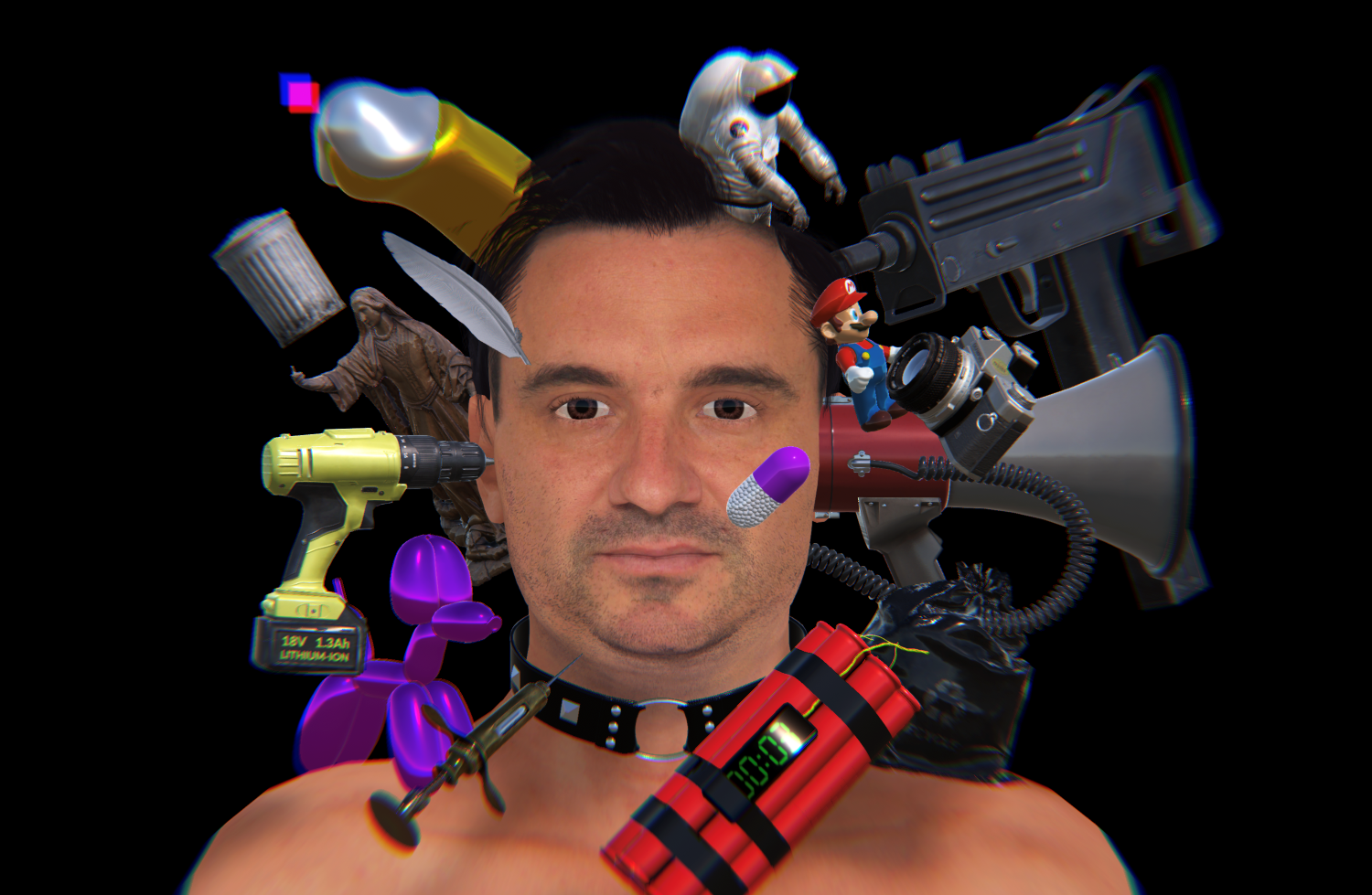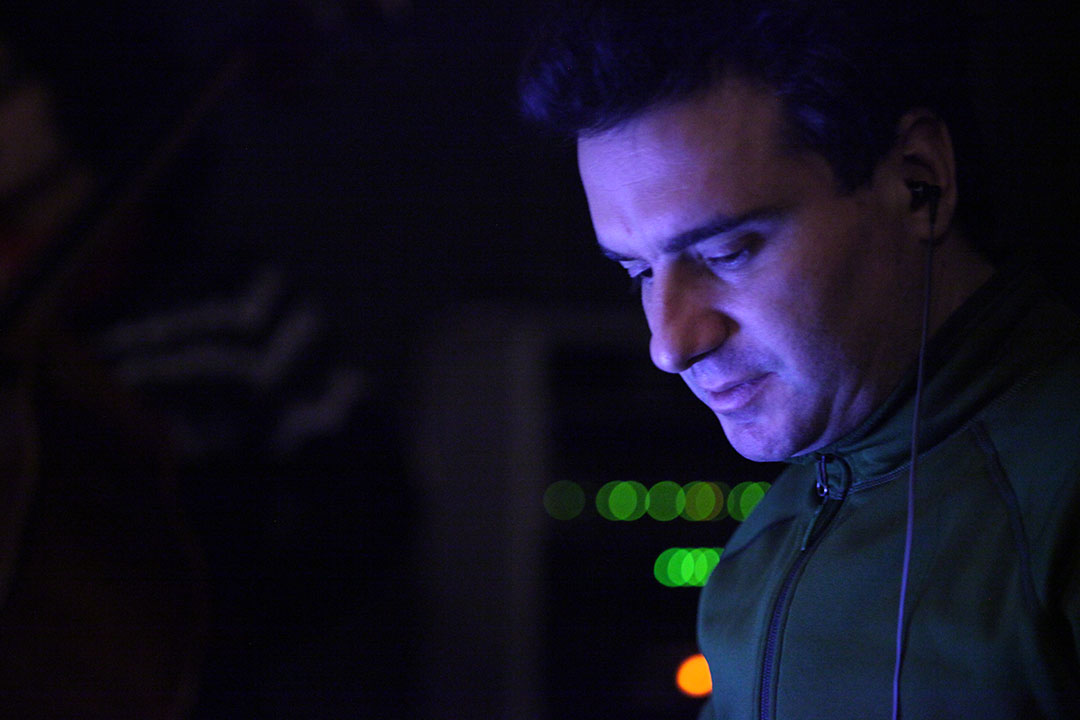The Colombian-Swiss composer Daniel Zea understands sound as a plastic material. In his work, he combines sounds, movement, electronics and video with digital setups. A portrait by Jaronas Scheurer.
Jaronas Scheurer
“I compose more from a designer as from as a composer’s point of view,” says Daniel Zea during our interview. “I’m interested in things like symmetry and asymmetry, ergonomics and balance and sound is a plastic material to me.” He also studied industrial design in Colombia before going on to study composition with Harold Vasquez-Castañeda in Bogotá. He then came to Geneva and finished his studies with Eric Gaudibert at the haute école de musique (HEM) and also studied at the Institute of Sonology in The Hague for two years before co-founding Ensemble Vortex and starting his teaching carreer in interactive design at Geneva’s HEM: Daniel Zea’s CV is therefore long and varied – industrial designer, composer, audio designer, media artist and programmer.

Zea usually writes music for complex networks where performers, self-developed and conventional instruments, electronics, video projections and computer programmes are linked together. “When I work with interactive systems, it’s actually a design project: I develop a setup combining hardware, software and human interaction in such a way that sound and music are created.” His works blend movement and sound, resulting in self-developed instruments or scores that generate themselves in real time – such as in Box Tsunami from 2021.
Daniel Zea composed Box Tsunami 2021 during the Corona pandemic for the four musicians of the Concept Store Quartet.
Box Tsunami
Zea wrote Box Tsunami for young Basel-based Concept Store Quartet during the coronavirus pandemic, with the huge ammount of parcels and packages mailed, symbolizing the consumer craze, as starting point: “A person in front of an empty box – that’s very poetic. What does it mean? Why is the person sitting there? Why is the box empty?”. That’s how Box Tsunami begins: the four musicians sit in front of large cardboard boxes with their instruments and a laptop. These are open at the top with white light shining out. The boxes knock, rustle and creak. The musicians look intently at their laptops and lay delicate, filigree sounds over the boxes’ rumbling – all on their own, without paying much attention to each other.
For Box Tsunami, Zea started by developping the sounding boxes. He fitted them with small electric hammers and so-called transducers, which transmit signals in the way a loudspeaker would. This turns the cardboard boxes into instruments one can control electronically. However, the signals are rather quiet, which is why the four musicians can only play quietly and softly. In order to link musicians and boxes, their electric hammers are controlled by the percussionist using a midi drum pad. An interactive loop links the musicians with the cardboard boxes and the score is generated from this in real time. Similar to what pappened during the lockdown times, everyone sits mesmerised in front of their screens. They are dependent on the actions of others and, above all, on the technological means of communication, but never meet each other and the boxes from online purchases pile up around them – the box tsunami.
In the self-portrait of Daniel Zea and the solo show Autorretrato from 2023, you see him sitting in front of a camera and a larger-than-life avatar of him on the screen.
Autorretrato
The setting for the composition Autorretrato (Self-Portrait) is simpler: Zea himself sits in front of a camera and on the screen behind him you can see an avatar performing the same facial expressions. A digital doppelganger. Zea can control and manipulate sounds with his facial movements. Over time, the screen is populated by various objects such as a can of cola, high heels, a hand grenade or a crucifix. This is done using a face tracking app that links Zea to the audio programme. For Autorretrato, Zea is composer, audio designer, software developer and performer all at once. “The most difficult part was definitely the performing,” the composer explains. “I’m not used to standing alone centre stage, so I was nervous before the premiere. It’s also a very personal piece. On one hand, it’s risky, but it also allows me to say and do things that I wouldn’t otherwise dare.”
Autorretrato is new and Zea describes it as a “work in progress”: “I would still like to work on the piece and expand some of its parts. The work on our self-portrait is in some way ongoing,” says Daniel Zea. He therefore continues to build, combining sound and movement, examining the subtlest facila expressions in terms of composition, developing instruments and embedding all of this in his socio-political considerations.
Jaronas Scheurer

Between April 30 and May 5, 2024, les Amplitudes Festival in La Chaux-de-Fonds will be dedicated to the work of Daniel Zea. Among other proposals, the Ensemble Vortex, which Zea co-founded, will premiere a new work for orchestra by Zea and a sound installation by Daniel Zea and Alexandre Joly will take place throughout the festival.
Nejc Grm, Alicja Pilarczyk, Pablo González Balaguer
Broadcasts SRF Kultur:
neoblog, 14.10.2020: la ville – une composition géante, auteur Anya Leveillé
neoblog, 23.01.2022 : Portrait unserer Zeit, Autorin Gabrielle Weber
Neo-profiles: Daniel Zea, Concept Store Quartet, Ensemble Vortex, Eric Gaudibert, Jeanne Larrouturou

